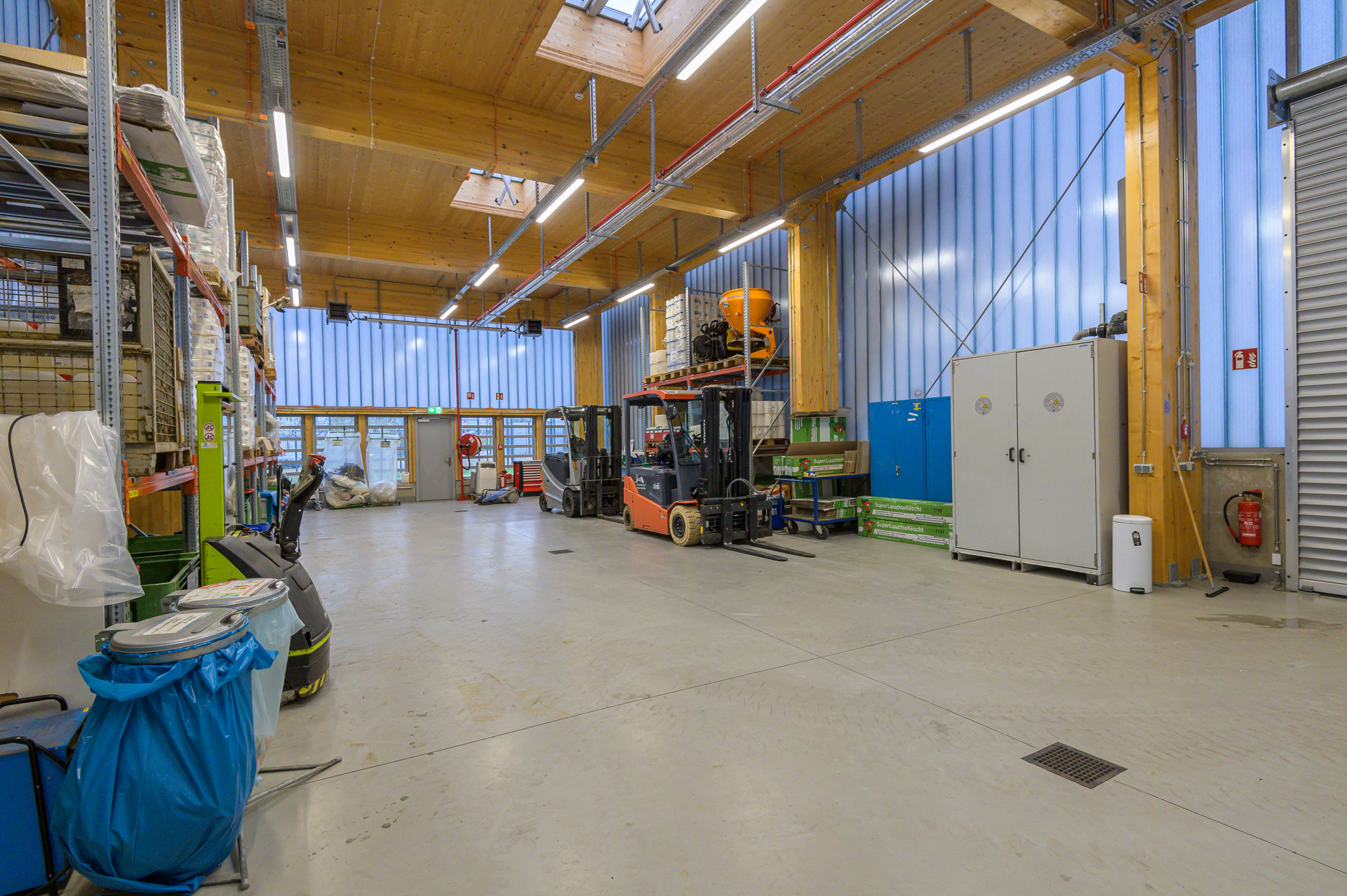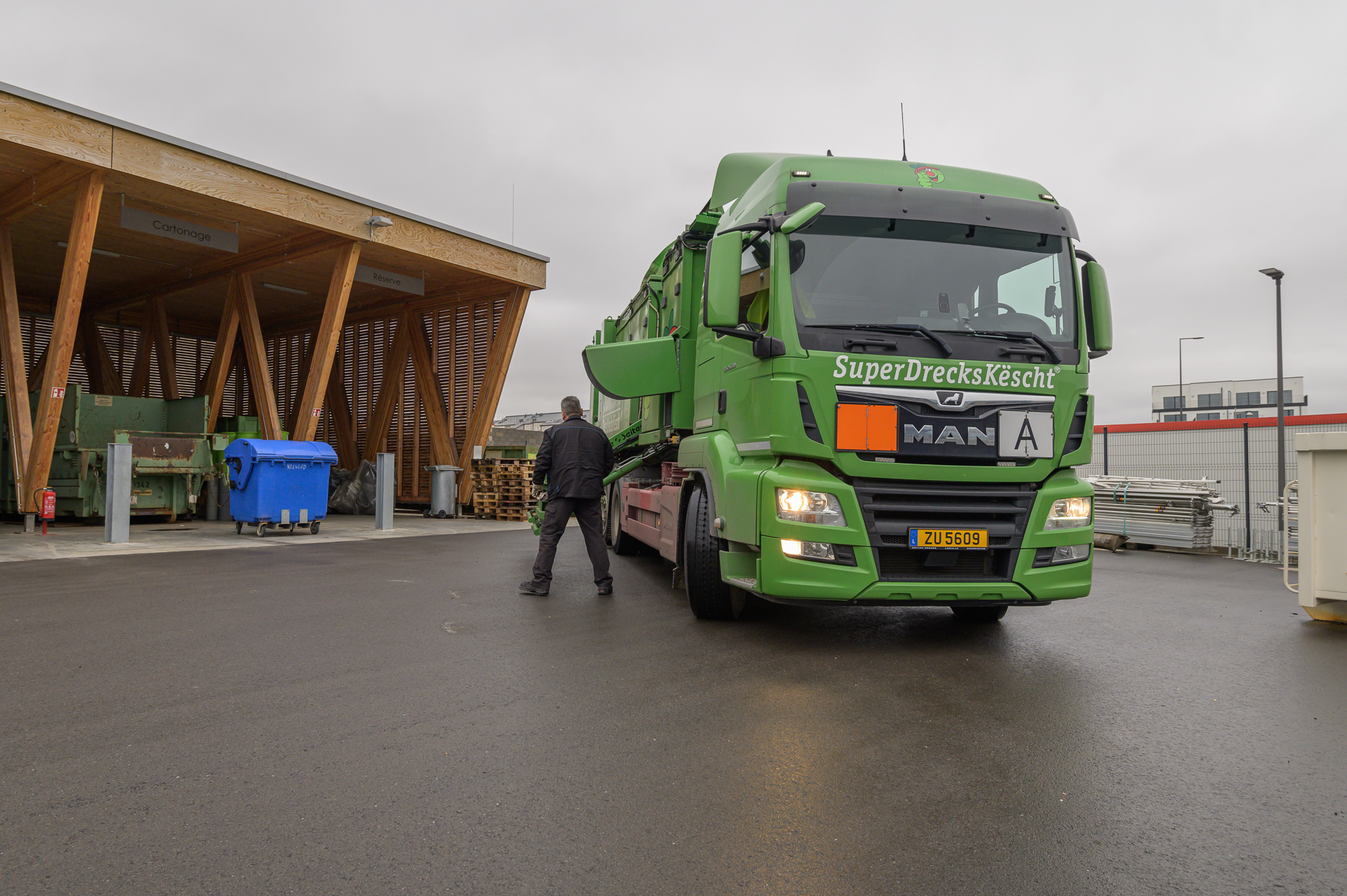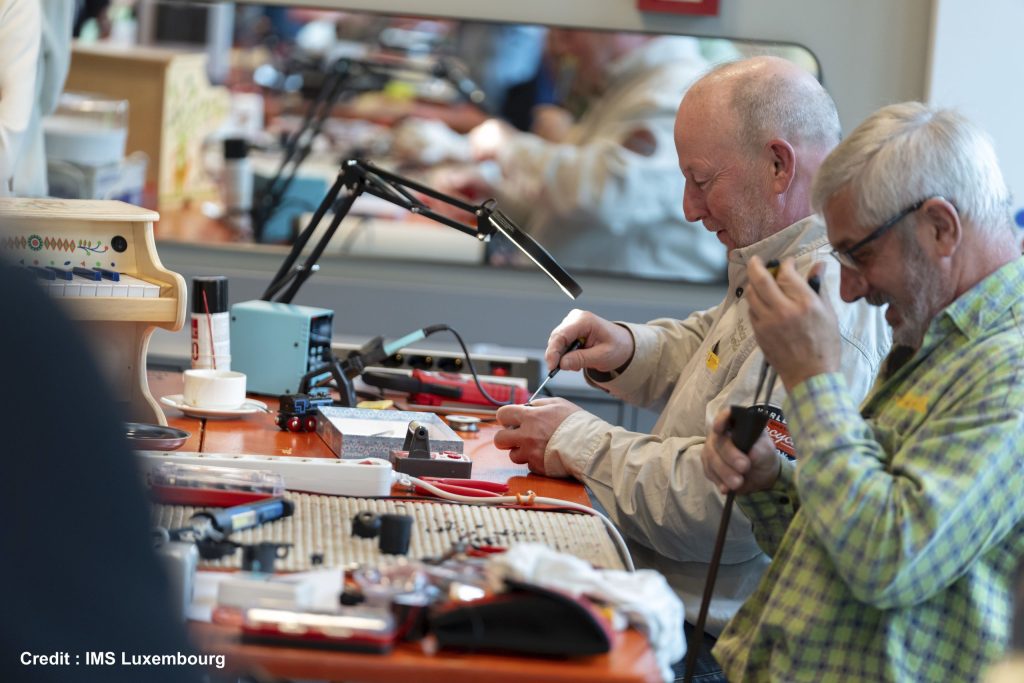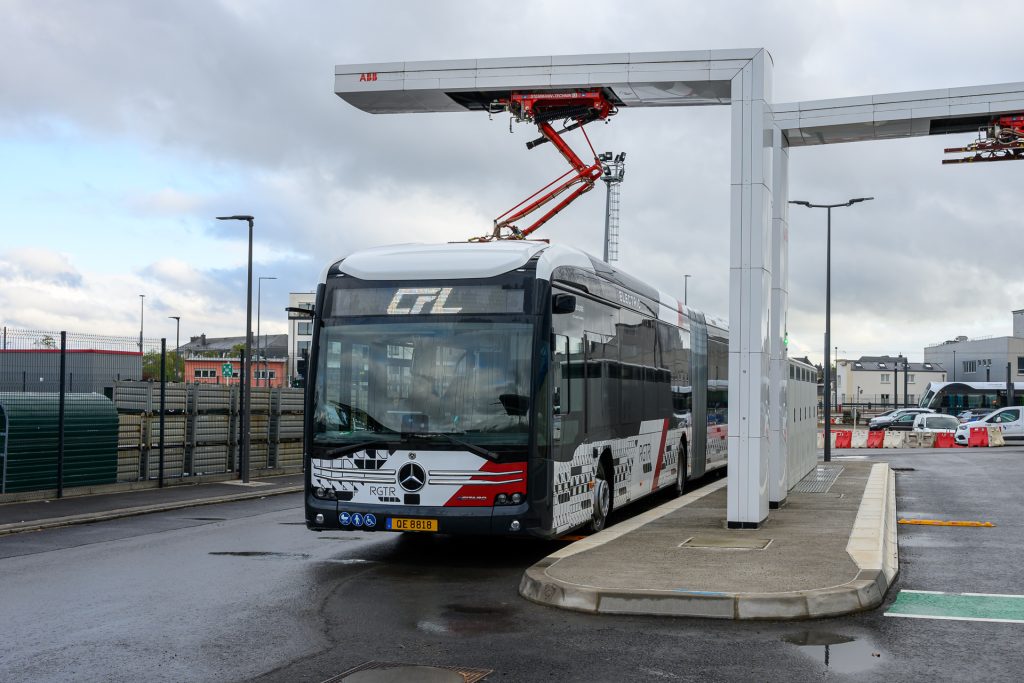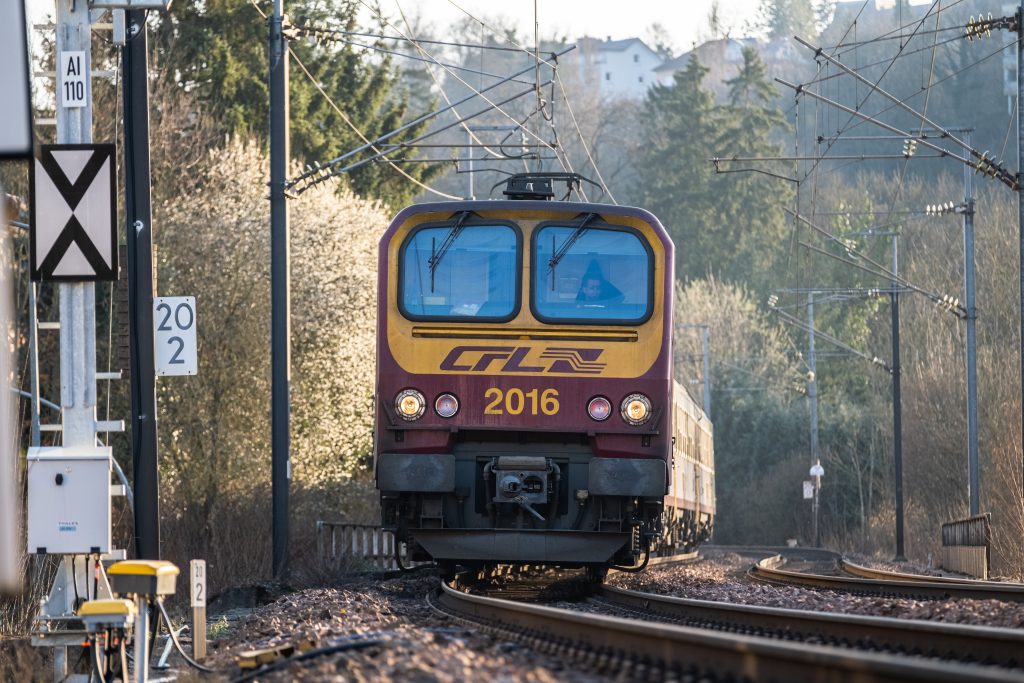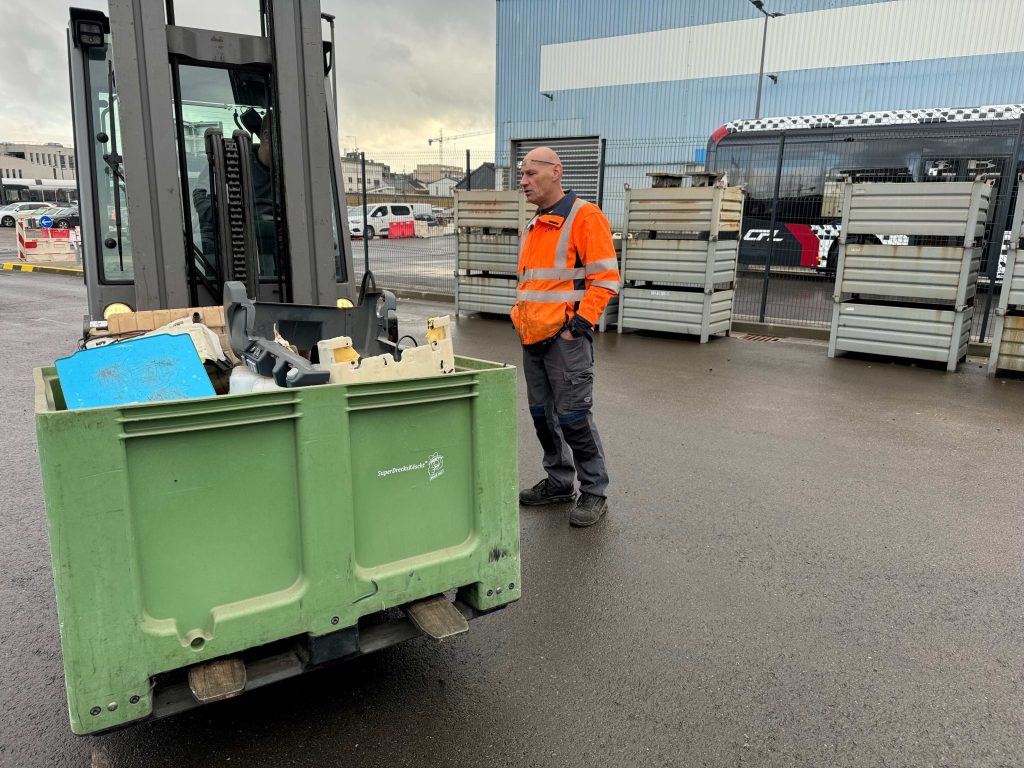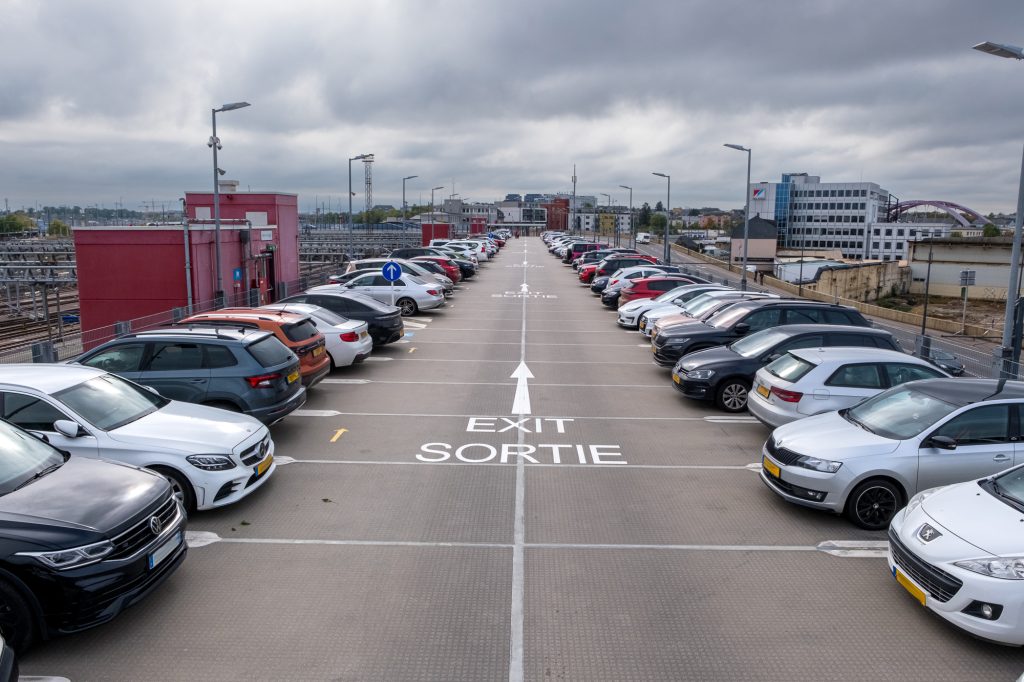
At the CFL recycling centre, nothing is lost, everything is collected
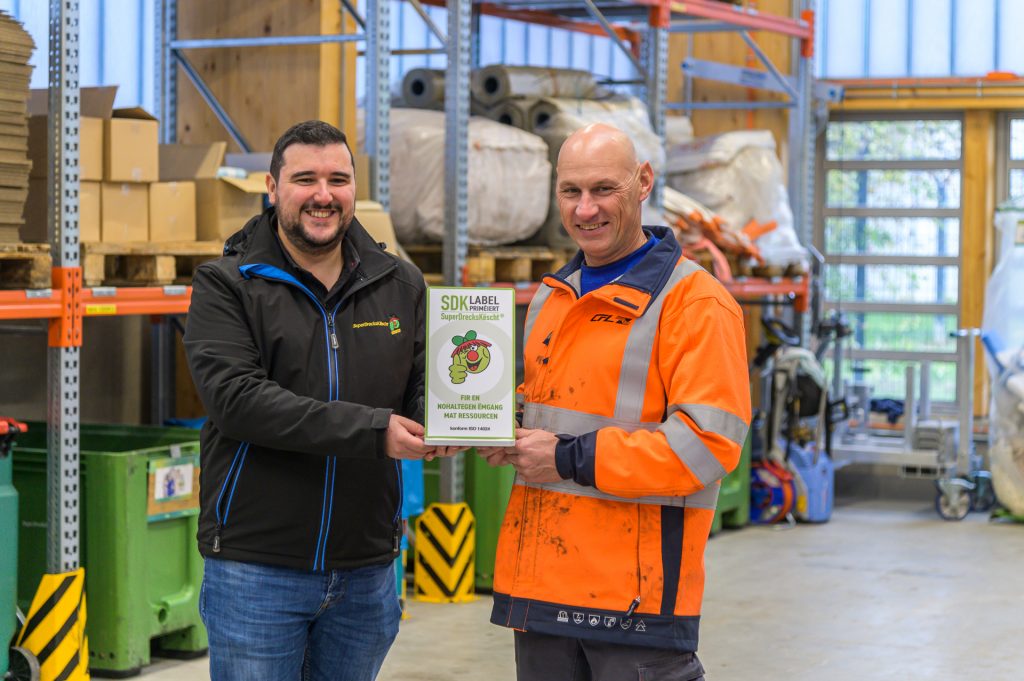
The CFL operates their own recycling centre dedicated to the activities of the Central Workshop and the Bus Service. An infrastructure that enables the standardisation and optimisation of waste processing in collaboration with several partners, including the “SDK fir Betriber”. Join in for a visit of the site with its manager.
Condensers, solvents, motor oil, cables… The range of products that enter the CFL recycling centre is as broad as the specialisation of the activities that are carried out: those of the Central Workshop for trains and the Bus Service. In the context of the European Week for Waste Reduction (19-27 November – EWWR), let’s discover this special location that stands alongside the new Kiev Avenue, close to the tram route.
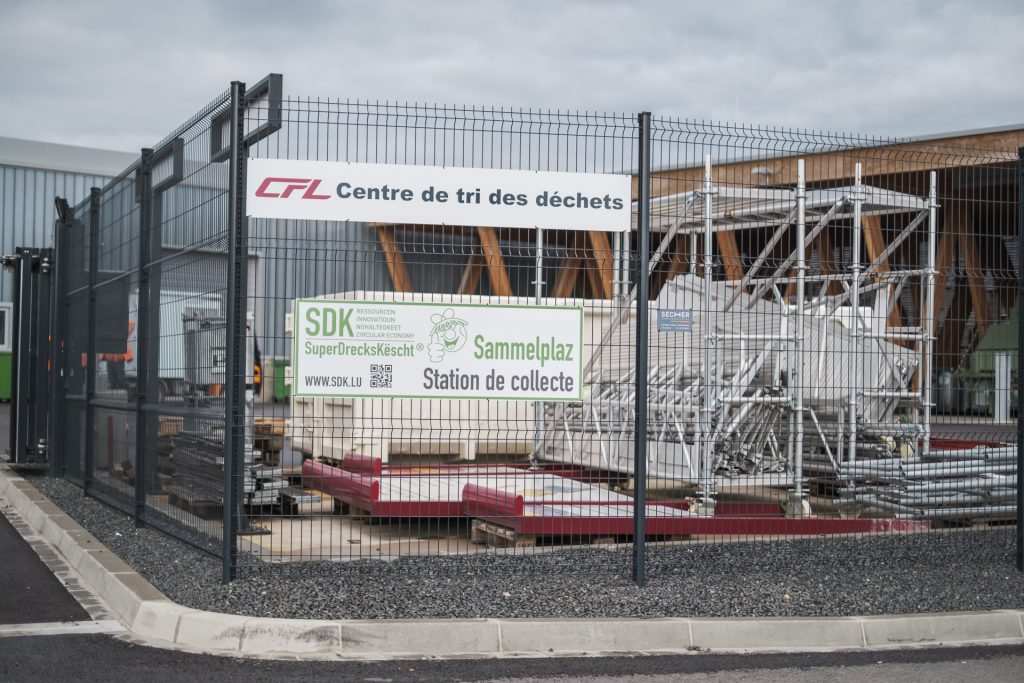
“Our recycling centre functions like a usual resource centre that residents and companies can turn to, with the difference that our centre has been designed to correspond to the specific needs of our activities,” says Patrick, Environmental Team Leader in the Trains and Equipment Department of the CFL.
Opened in 2020, following the demolition of the old structure that had to make way for the tram, the new centre was custom-designed with the support of SDK fir Betriber, which awarded it its national quality label. It also has the ISO 14024 label, which is the international standard for environmental management.
“The first step in the implementation of any project of this kind is to carry out an inventory of the situation, based on the obligations under the Waste Law, which is our guideline. We then advise each company free of charge throughout the process”, says Thierry Frères, environmental advisor at SDK fir Betriber, an initiative of the SuperDrecksKëscht set up by the Ministry of the Environment, Climate and Sustainable Development together with the municipalities, the Chamber of Crafts and the Chamber of Commerce in the context of national resource management.
A win-win partnership
Here, used sand from railcars braking systems is stored in a container, and over there, neon lights that have just been replaced (by LEDs in the case of DoSto coaches) are placed in boxes before being removed by the SDK. Each product has its own storage space, while awaiting a new destination. In total, some 298.225 tonnes of waste passed through the recycling centre in 2021.
“Some of our containers are used to collect familiar materials such as carton, glass or household waste, but most of them are used to process materials or items that are specific to the CFL,” adds Patrick. “All recyclable waste that is collected by SDK is recycled,” notes Thierry Frères.
With such a frame of reference, the five CFL employees working at the recycling centre are at the heart of a virtuous circle in which organisations and companies specialised in recycling, recovery and waste treatment are also involved.
“We consider them our partners, in particular the SDK, with whom we are in regular contact, for example, regarding the recovery of a new type of material or components that were previously untreated,” says Patrick. For example, the large bus front windows or the filters used for high-pressure cleaning at the train cleaning centre.
For the SDK, the CFL recycling centre is an example of good practice in waste management by a company. “The advantage of the CFL is that they have standardised their administrative procedures for waste management, regardless of the activity concerned,” says Thierry Frères. “Even if the waste to be treated varies from one activity to another, the fundamental approach remains the same.”
The City of Luxembourg recovers household waste and cartons, while other contracts have been concluded with companies for certain types of waste such as wood (Hein Group) or scrap metal (Derichebourg).

Recycling is everyone’s responsibility
But the challenge lies well ahead of the transport of waste to the recycling centre. Without the implementation and maintenance of a recycling chain as close as possible to the activities, the work of Patrick and his team would be difficult or even impossible.
Five clearly identified stations in the central workshop and the Bus department are used by employees to carry out the first stage of recycling themselves. “When these small stations are full, we remove the waste and take it back to the recycling centre, until the collection trucks pass by,” explains Patrick. He is counting on the mobilisation of all employees to advance the cause of recycling and even reduce the volume of waste by introducing good practices such as the use of washable and reusable wipes (consumed in large quantities in the workshop) since 2018 to replace their disposable equivalents. (link: https://www.wearecfl.lu/dechets-eaux-usees-co2-les-cfl-sactivent-sur-tous-les-fronts/)
“We also raise awareness among our trainees so that recycling becomes a reflex from the start,” adds Patrick who has been working at the CFL for 36 years. Any advice to share? “Continue to recycle your waste to save work at the other end of the chain and for the benefit of our planet”.
“I advise business leaders to rethink their purchasing policy between the necessary quantities, the choice of recyclable products or the labels certifying quality or production,” adds Thierry Frères. “The use of second-hand purchases must also be considered from the perspective of the circular economy. The new law on waste of June 2022 goes in this direction since it has reviewed the purpose of the Recycling Centres, which have become resource centres that process what are now called products that will return, in one way or another, to a new cycle.”
At the CFL, as at the resource centres, nothing is lost, everything is sorted.
Top 5 products
Top 5 products entering the recycling centre per year (2021), weight expressed in tonnes. 54 types of waste are produced and treated, according to the classification established by the European Commission in the European Waste Catalogue. In addition to waste specific to railway activities, residual household waste comes from the cleaning of trains and from the rubbish bins on board trains.
| Name | |||
| 1 | Mixed metals | 186,26 | Tonnes |
| 2 | Residual household waste | 36,04 | Tonnes |
| 3 | Contaminated wood | 25,68 | Tonnes |
| 4 | Paper and cardboard | 10,52 | Tonnes |
| 5 | Construction waste | 6,9 | Tonnes |
